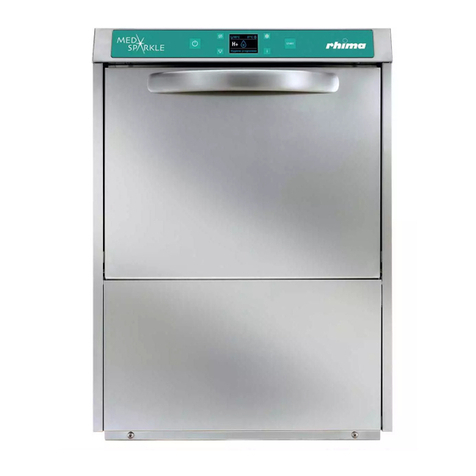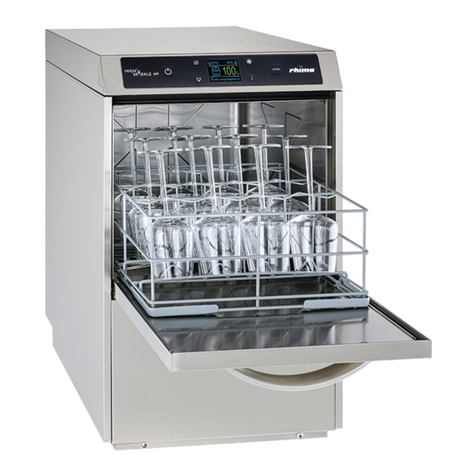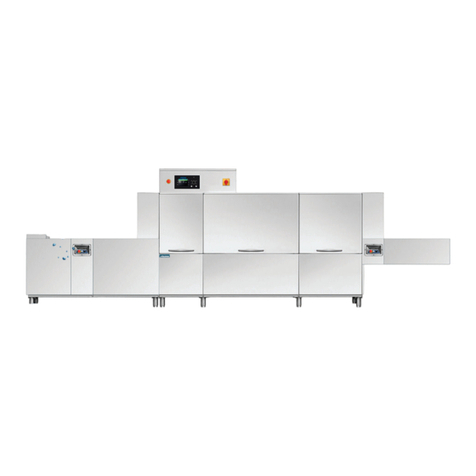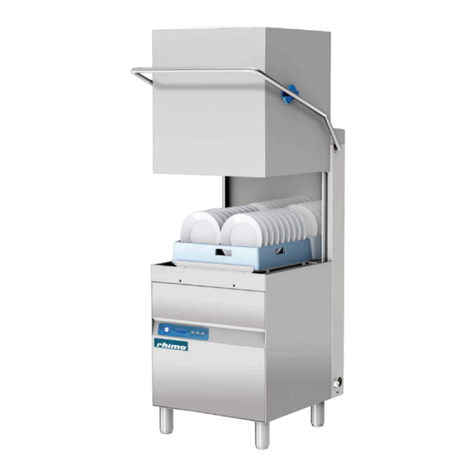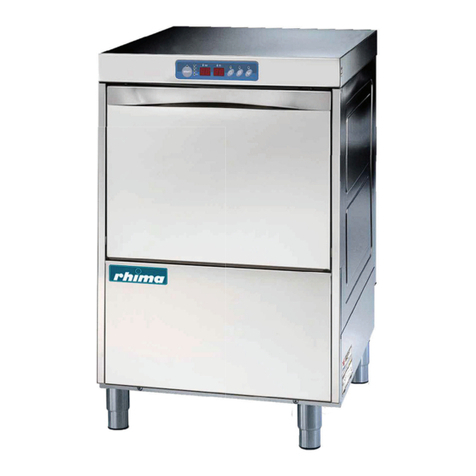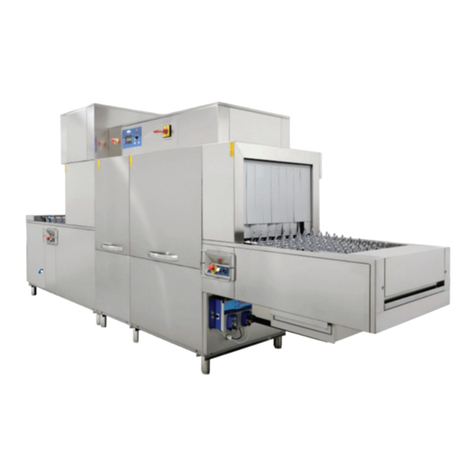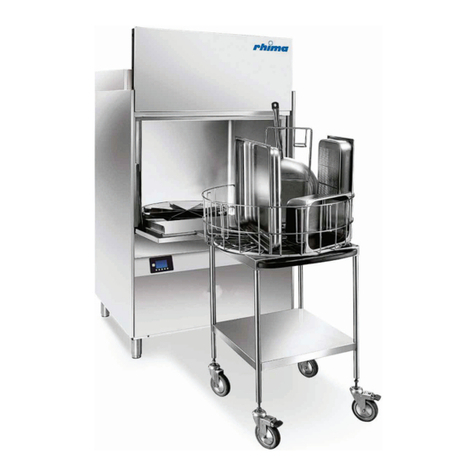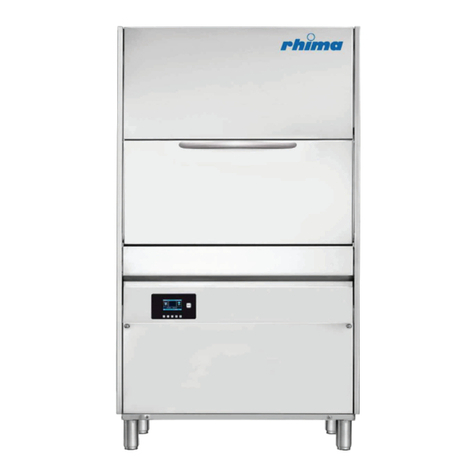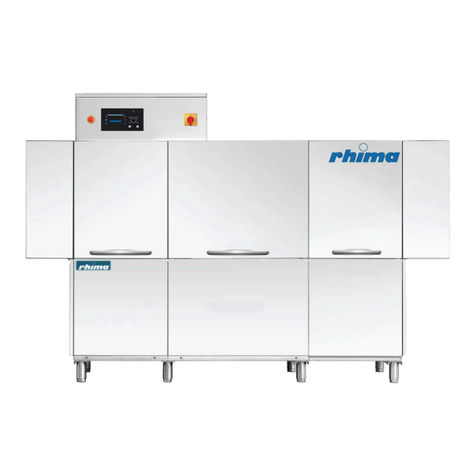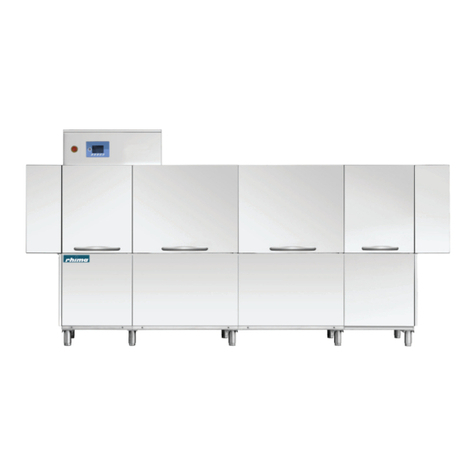
8
ECOLOGICAL ASPECTS
Recommendations for optimal use of energy, water and additives
Use the machine fully loaded when possible.
This shall prevent detergent, rinse aid, water and energy consumption waste.
Detergent and rinse-aids
Use detergents and rinse-aid chemicals with high biodegradability, to best respect the
environment. Verify proper dosage in relation to water hardness.
Excess product pollutes rivers and seas while an insufficient dose results in unsatisfactory
dish washing and/or hygiene.
Boiler and Wash-Tank temperatures
The boiler and tank temperatures are set by the manufacturer in order to obtain the best
washing results with detergents on the market. The temperatures can be reset by the installer
in relation to your detergent.
Pre-washing
Carefully pre-wash with a moderate amount of water at room temperature to facilitate
the removal of animal fats. To remove encrusted materials warm water soaking is
recommended.
Note:
Wash objects as soon as possible to avoid deposits from drying and compromise effective
washing.
For effective washing routine dishwasher cleaning and maintenance is advised.
Disregarding the points listed above and of any the information contained in this
manual can cause energy, water and detergent waste with a subsequent increase in
running costs and/or performance reduction.
H.A.C.C.P. AND HYGIENE REGULATIONS
• When starting the machine ON, no wash-cycle will be starting until the set boiler and
wash-tank temperatures are reached. During operation, the machine will not start the
rinse cycle till the set boiler temperature is reached.
• Remove carefully all solids from the objects to be washed, to avoid obstruction of filters,
nozzles and piping.
• Drain the wash tank and clean the filters at least twice a day.
• Check if the detergent and rinse-aid dosage are correct (as recommended by the
manufacturer). In the morning, before starting the machine, check that the quantity of
chemicals in the canisters is enough for daily supply.
• Keep your working tables clean.
• Extract the rack with clean hands or gloves to avoid finger marks.
(see chap. MAINTENANCE)
• Do not dry or polish the washed objects with cloths, brushes or rags that are not sterile.
